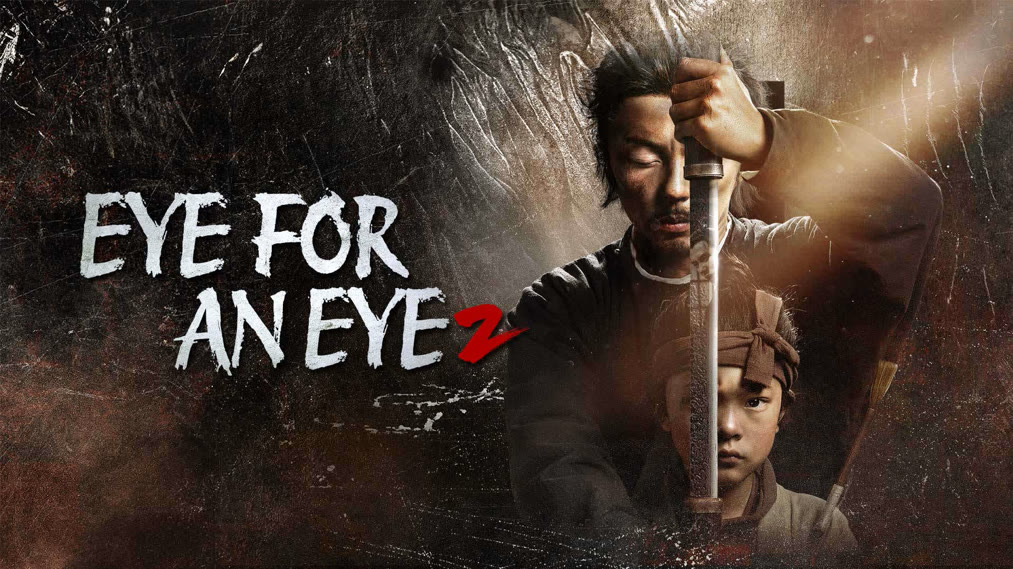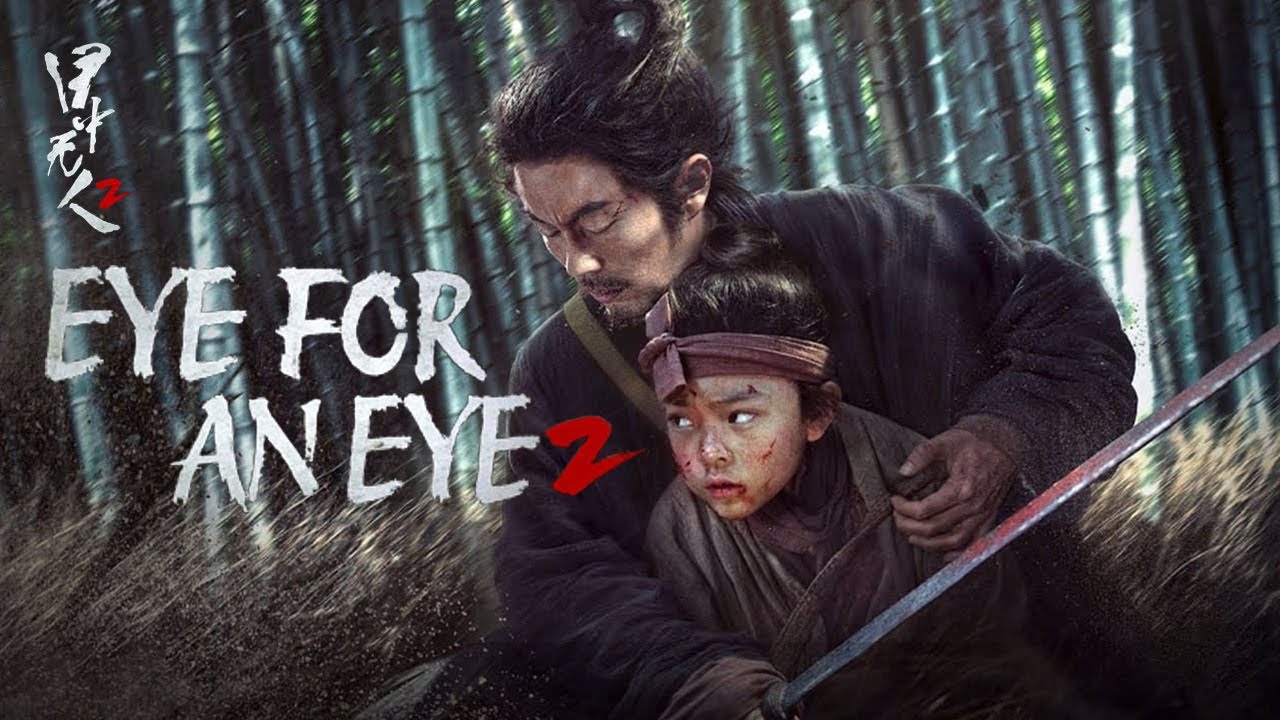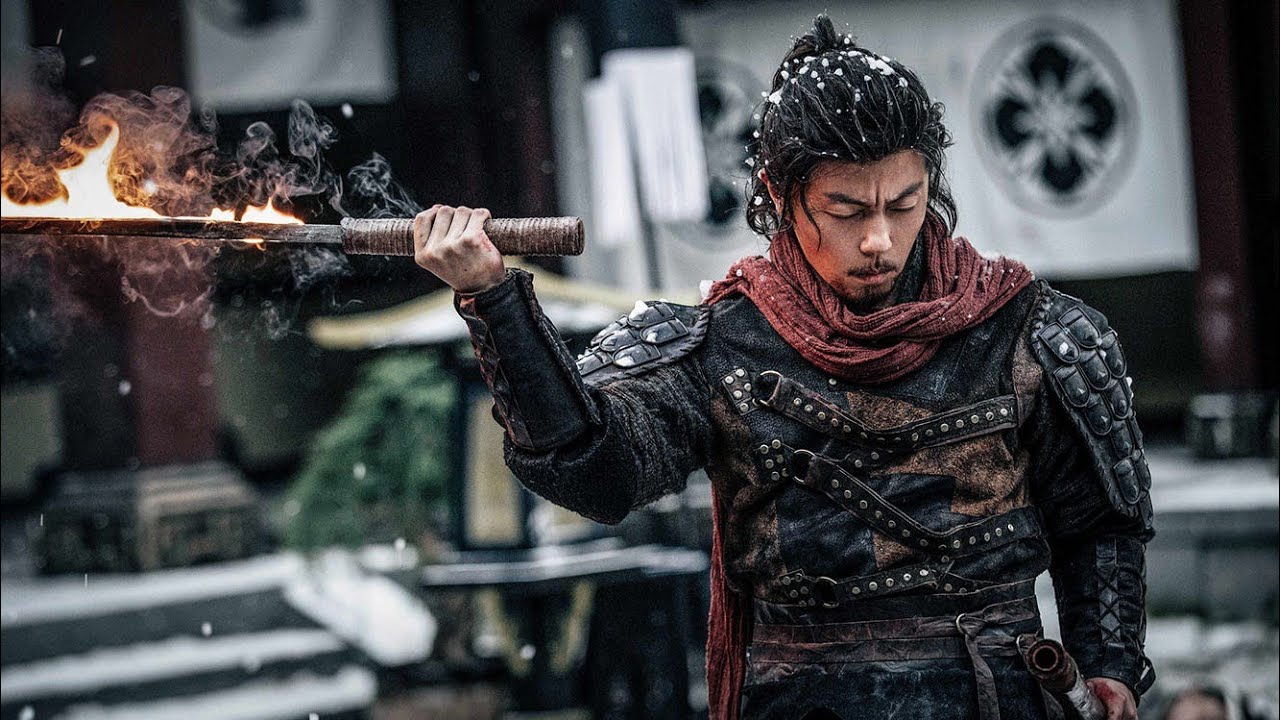🎬 Eye for an Eye 2 (2024)

Plot Overview
Eye for an Eye 2 picks up the gritty tale of Cheng Xiazi, a blind swordsman and bounty hunter whose lethal skills have made him a legend in the Tang Dynasty’s underbelly. Following the events of the first film, where Cheng was a solitary figure seeking to retire in his hometown of Chang’an, this sequel introduces a new dynamic to his journey. The story begins in Youzhou, where Cheng, still driven by the pragmatic desire to earn enough bounties for a peaceful retirement, stumbles into a gambling den to apprehend five fugitives. What starts as a routine job quickly escalates—this time, Cheng’s path crosses with Zhang Xiaoyu (Yang Enyou), a young orphan girl whose family has been brutally massacred by a cruel officer, Li Jiu Lang (Huang Tao).
The narrative pivots on an uneasy mentorship. Xiaoyu, fueled by a thirst for vengeance, clings to Cheng despite his initial reluctance. He’s not a natural caretaker; his blindness and gruff demeanor make him an unlikely guardian. But Xiaoyu’s persistence—and her tragic story—eventually wear him down. Cheng takes her under his wing, teaching her the ways of the blade while navigating his own moral qualms about setting her on a path of violence. The film unfolds as a road tale, with the pair forming a makeshift family while hunting bounties, their journey punctuated by encounters with bandits, corrupt officials, and the looming threat of Li Jiu Lang, whose influence casts a dark shadow over their travels.
Yang Bingjia’s screenplay doesn’t stray far from classic wuxia tropes: a stoic warrior, a wronged innocent seeking justice, and a villain whose cruelty demands retribution. The plot is lean, clocking in at 90 minutes, but it uses its runtime efficiently to balance action with quieter character moments. Xiaoyu’s quest for revenge drives the emotional stakes, while Cheng’s internal struggle—whether to fully commit to her cause or steer her away from bloodshed—adds a layer of depth. Flashbacks to Xiaoyu’s family massacre are brutal and unflinching, grounding her motivations in raw pain. Yet the film doesn’t overcomplicate its narrative; it’s a straightforward revenge story with enough twists—like a betrayal among Cheng’s old allies—to keep the tension simmering until the inevitable bloody climax.

Character Dynamics and Performances
The core of Eye for an Eye 2 lies in the evolving relationship between Cheng Xiazi and Zhang Xiaoyu, a dynamic that elevates the film beyond its genre trappings. Xie Miao delivers a commanding performance as Cheng, embodying the archetype of the blind swordsman with a blend of stoicism and understated vulnerability. His portrayal avoids the pitfalls of caricature—Cheng’s blindness isn’t a gimmick but a lived reality, reflected in subtle mannerisms like the tilt of his head during conversations or the way he grips his sword with a mix of instinct and precision. Miao’s physicality is mesmerizing; whether he’s dispatching foes or sharing a rare moment of warmth with Xiaoyu, he brings a gravitas that anchors the film.
Yang Enyou, as Xiaoyu, is a revelation. Despite her young age, she carries the weight of her character’s trauma with a maturity that never feels forced. Her scenes of grief are heartbreaking—particularly a moment where she clutches a tattered remnant of her family’s belongings, her small frame trembling with rage and loss. Yet Enyou also infuses Xiaoyu with a spark of defiance, her fiery determination clashing with Cheng’s world-weary cynicism. Their banter, often laced with dark humor, provides much-needed levity; a standout exchange involves Xiaoyu cheekily mocking Cheng’s drinking habits, only for him to retort with a dry quip about her sword stance. It’s a classic master-apprentice dynamic, but the film wisely avoids romanticizing it—there’s a rawness to their bond that feels earned amidst the bloodshed.
The supporting cast delivers mixed results. Huang Tao’s Li Jiu Lang is a menacing antagonist, his cruelty amplified by a chilling lack of remorse—scenes of him ordering the slaughter of innocents are shot with a cold detachment that makes his villainy palpable. However, his character lacks depth beyond being a target for retribution; he’s evil for evil’s sake, which works in a visceral sense but misses an opportunity for nuance. Other side characters, like Pei Kuishan’s Jiang Da Hu Zi, a gruff bounty hunter who briefly allies with Cheng, add texture to the world but often feel like plot devices rather than fully realized figures. The film’s focus remains squarely on its leads, and while this tightens the emotional core, it occasionally leaves the broader cast feeling underdeveloped.

Action and Direction
Yang Bingjia’s direction in Eye for an Eye 2 showcases a clear evolution from the first film, doubling down on the gritty, kinetic style that made its predecessor a streaming hit. The action sequences are the film’s crown jewel, blending wuxia elegance with raw brutality. Cheng’s blindness adds a unique flair to the choreography—his movements rely on sound and instinct, making each fight a ballet of precision and chaos. A standout sequence occurs early in a gambling den, where Cheng takes on a dozen foes in a cramped space; the camera weaves through the fray, capturing the crunch of bones and the spray of blood with unflinching clarity. Another highlight is a rain-soaked ambush in a forest, where Cheng and Xiaoyu fend off attackers in a muddy, desperate struggle—the choreography here is relentless, with every strike feeling like it carries the weight of survival.
Bingjia’s use of handheld camerawork and long takes adds a visceral edge, immersing the audience in the violence without resorting to excessive CGI. Unlike many modern martial arts films that lean on digital blood or flashy effects, Eye for an Eye 2 keeps it practical—wounds look real, and the environments (dusty taverns, windswept plains) feel lived-in. That said, the editing can occasionally overcompensate with fast cuts, particularly in larger battles, which might obscure some of the choreography’s finer details. It’s a minor quibble in an otherwise stellar display of action craftsmanship.
Visually, the film embraces the Tang Dynasty setting with earthy tones and stark contrasts—think muted browns and grays punctuated by the crimson of blood and the glint of steel. Bingjia’s framing often emphasizes Cheng’s isolation, using wide shots to dwarf him against sprawling landscapes, yet he also knows when to tighten the focus for emotional beats, like a close-up of Xiaoyu’s tear-streaked face as she trains with a sword too heavy for her hands. The score, heavy on traditional Chinese instruments like the erhu, complements the tone without overpowering it, though it occasionally veers into melodrama during slower scenes. Overall, Bingjia’s direction strikes a balance between style and substance, ensuring the film’s action feels integral to its story rather than a mere spectacle.

Overall Impact and Reception
Eye for an Eye 2 doesn’t reinvent the wuxia genre, but it refines what made the first film a surprise hit: a lean, emotionally charged story paired with top-tier action. It’s a film that knows its audience—fans of martial arts cinema looking for a straightforward yet satisfying tale—and delivers with confidence. The chemistry between Xie Miao and Yang Enyou gives the film a beating heart, turning what could have been a rote sequel into a compelling character study wrapped in a vengeance-driven shell. While the plot treads familiar ground (the “Lone Wolf and Cub” influence is undeniable), its execution feels fresh enough to stand out in the crowded direct-to-streaming market.
The film’s strengths lie in its simplicity and sincerity. It doesn’t overreach with convoluted twists or heavy-handed themes, instead focusing on the primal pull of justice and survival. Cheng’s reluctant mentorship of Xiaoyu offers a poignant look at redemption and responsibility, themes that resonate even if they’re not explored with groundbreaking depth. The action, meanwhile, sets a high bar for low-budget wuxia, proving you don’t need a blockbuster budget to stage fights that leave an impression. However, the film isn’t flawless—its supporting characters lack depth, and some emotional beats feel rushed, particularly in the final act, where the resolution comes quickly after a brutal showdown.
Reception-wise, the film has carved out a niche among genre fans since its February 2024 release on iQIYI and later on platforms like Hi-YAH!. It’s been praised for its improved fight choreography and emotional heft compared to the first, though some critiques note its predictable story and occasional pacing issues. Commercially, it’s a modest success in the streaming space, building on the cult following of its predecessor without breaking into mainstream acclaim. For martial arts aficionados, it’s a gem—a testament to the enduring appeal of blind swordsman tales, done with enough flair to warrant a third chapter. As a sequel, it doesn’t just coast on the original’s goodwill; it sharpens its blade and aims higher, even if it doesn’t always hit the deepest mark.










